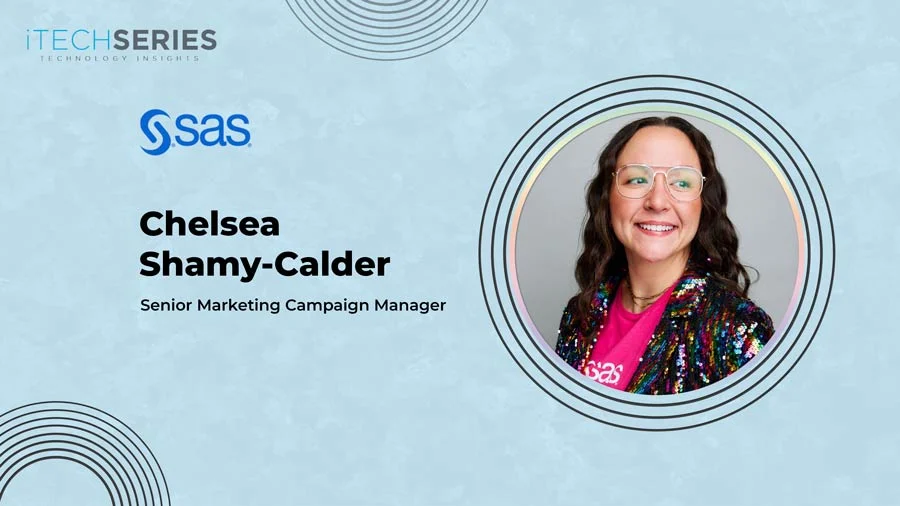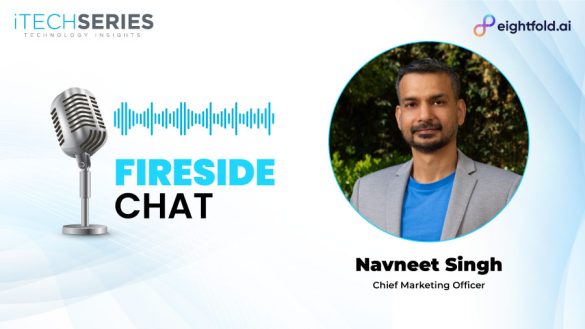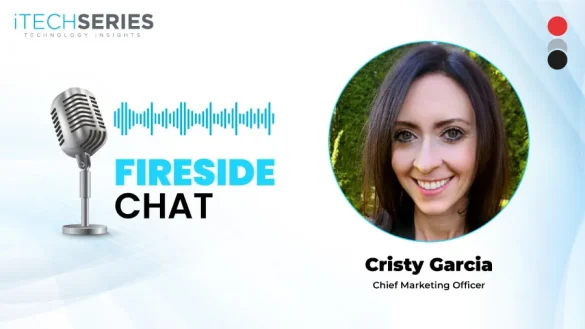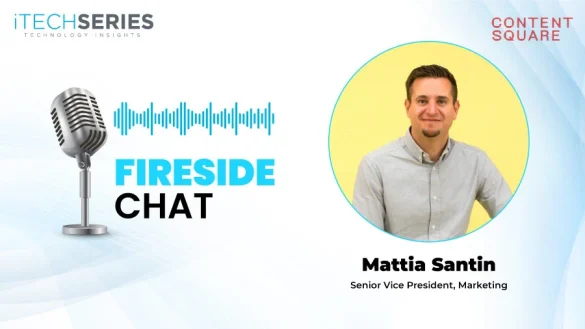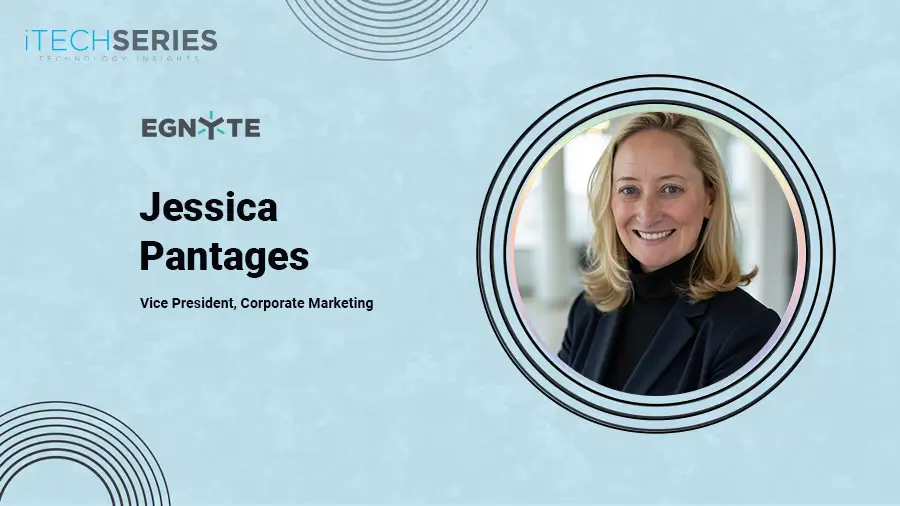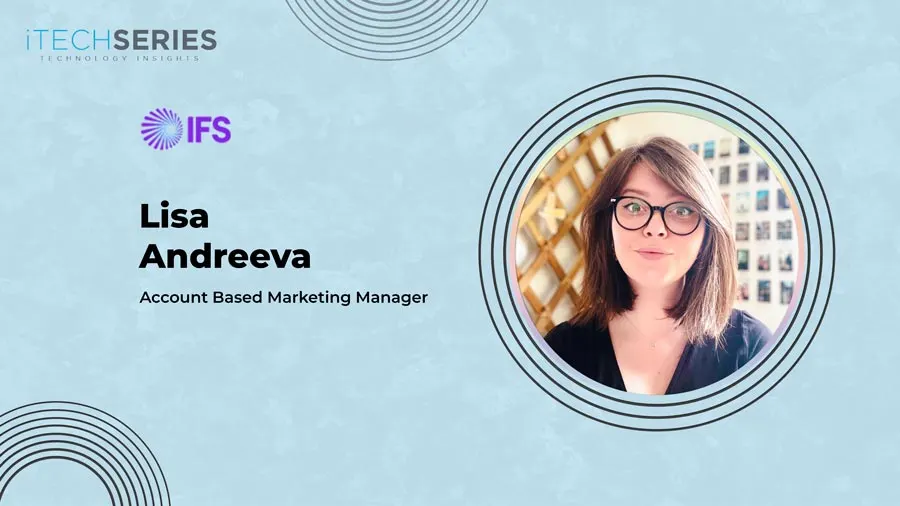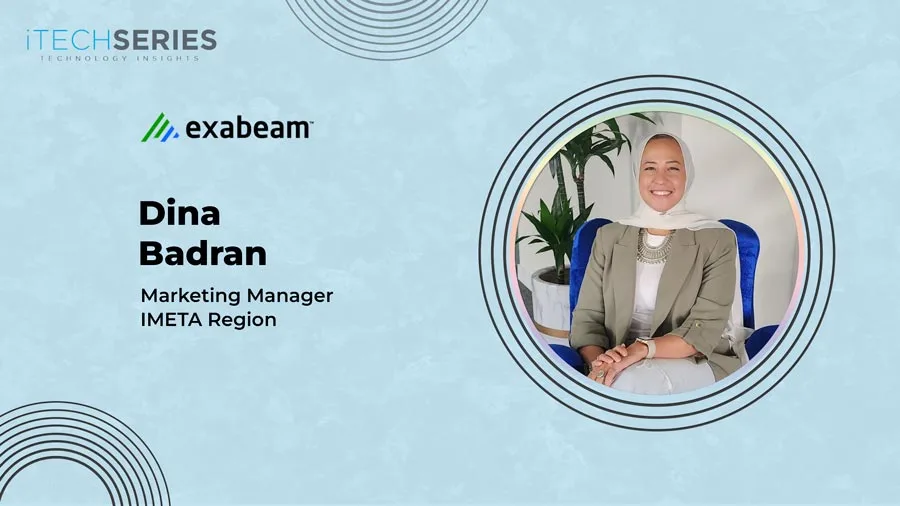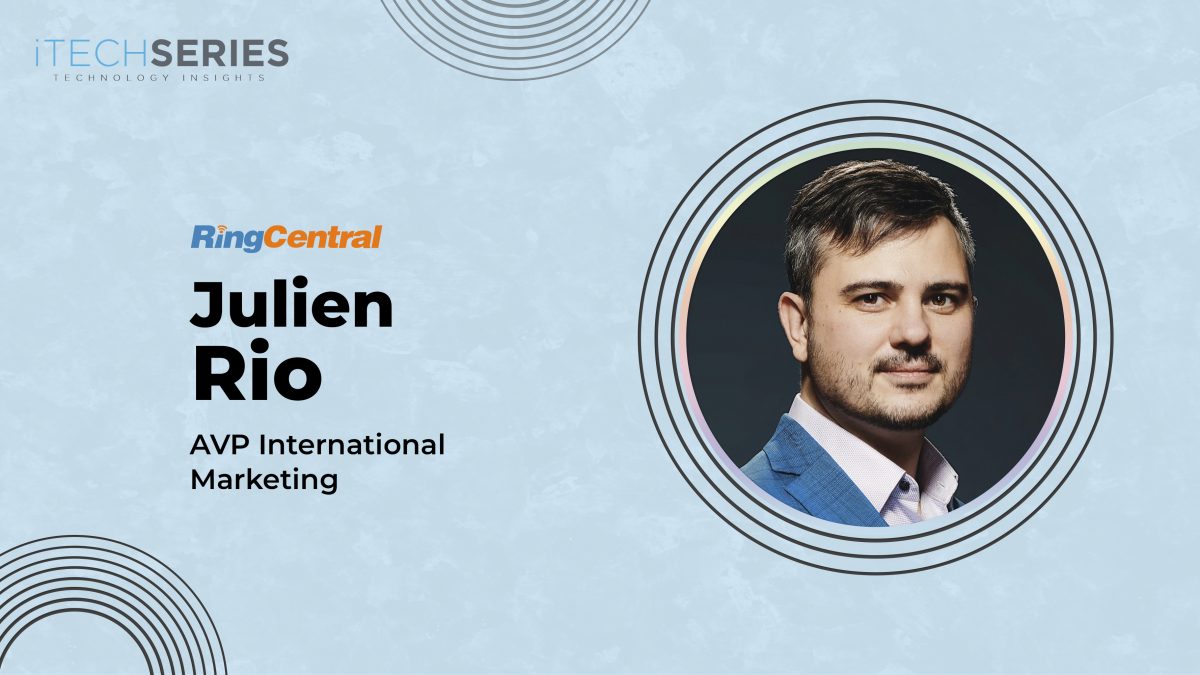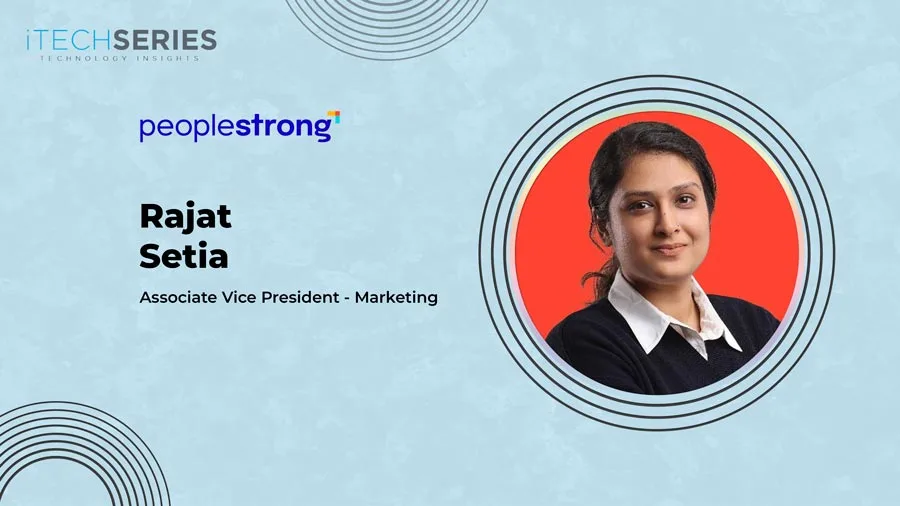Chelsea Shamy-Calder, Senior Marketing Campaign Manager at SAS, shares her journey from PR aspirations to leading marketing efforts in the technology sector. In this candid conversation, she explores strategic prioritization, audience-first storytelling, the evolving role of AI, and how empathy, data, and collaboration fuel impactful, scalable go-to-market strategies across regions.
Thanks for joining us, Chelsea! Could you walk us through your journey as a marketer?
Absolutely, and thank you for having me! My marketing journey really began at Purdue University, where I studied public relations and strategic communication. That’s where I first started to understand the power of messaging, empaths storytelling, and audience engagement. But at the time, I thought I was headed toward a career in PR or media relations. It wasn’t until I graduated and landed my first job at a creative agency that I realized what I actually loved was marketing.
There was something electric about being able to bring both sides of my brain to the table. I loved the challenge of crafting strategy, but also the creativity that came with building something from scratch, whether it was a brand, a campaign, or a pitch that resonated with the right people at the right time.
Since then, I’ve been lucky enough to work across a range of environments, from scrappy agencies and unicorn startups to purpose-driven nonprofits and global enterprise tech. That cross-industry and cross-functional exposure has really shaped how I approach marketing. It’s taught me how to be resourceful, how to adapt, and how to stay relentlessly focused on the audience.
Today, I lead marketing for the financial services industry at the data and AI giant, SAS, where I get to combine everything I’ve learned, creative storytelling, data-driven strategy, and cross-functional collaboration, to build programs that drive momentum, pipeline, and revenue. What’s kept me in this field is that it’s always evolving. There’s always a new technology, a new customer behavior, a new challenge to solve. And to me, that’s the fun part.
When leading global campaigns, how do you strike the right balance between local relevance and a unified brand message?
For me, it starts with defining a strong, clear central narrative. That means getting crystal clear on what we want to say as a brand, why it matters, and how it aligns with broader business goals. That message should be able to travel. It should be rooted in a real, universal customer need.
I’ve found success by treating global-to-local not as a hierarchy, but as a partnership. I see corporate marketing’s role as building the framework: defining the strategic foundation, core messaging, and the toolkit. But the real magic happens when you co-create with field teams. They know the nuances of their markets: the language, the channels, the tone, the cultural cues, and when you give them the space to adapt while still staying true to the core narrative, you get campaigns that actually land.
What’s your approach to evaluating and prioritizing multiple marketing campaign ideas for both impact and feasibility?
Great ideas are never in short supply, but resources, time, and attention always are. So, my approach to prioritization starts with asking the right questions: Who is this for? What business outcome are we driving toward? And do we have the right components to execute it well? I’m always balancing two core lenses: impact and feasibility.
On the impact side, I’m looking at audience relevance, alignment to strategic business goals, and the potential to drive meaningful results, whether that’s pipeline generation, influence, brand awareness, or even internal alignment across GTM teams. I’ll ask: is this solving a real problem for our customer? Is it something sales can rally behind? Is it differentiated enough to stand out?
Then there’s feasibility. I’ve worked in startups and enterprise environments, so I’ve learned to be very honest about what it’s going to take to get something out the door (bandwidth, budget, content, data, systems, and stakeholder alignment). Sometimes a brilliant idea just isn’t realistic in the moment, and that’s okay. That doesn’t mean it’s a no; it might just be a “not yet.”
I also like to visualize the ideas on a quadrant, high impact vs. low impact, easy to execute vs. resource-heavy. It helps make prioritization a shared, transparent conversation with cross-functional partners.
And I always leave room for one wildcard, something that’s a bit outside the box or unproven. Some of the most successful programs I’ve led started as “let’s just test it and see.” But we tested with intention. You don’t need a 20-page business case to try something small that could turn into something huge. And I’ve been grateful to work with many marketing leaders who have supported their teams in that.
Can you walk us through a marketing campaign you led that was particularly challenging but turned out to be a success?
One campaign that stands out was the Banking Breakdown, launched in direct response to the collapse of Silicon Valley Bank and the wave of market volatility that followed in the U.S. It was one of those rare moments when the industry was shifting almost overnight. Confidence was shaken, regulatory conversations intensified, and banking leaders were urgently seeking clarity.
There wasn’t enough time for a traditional campaign planning cycle. We had to move fast but thoughtfully. We assembled a cross-functional team to identify the key questions we were hearing: What risks are emerging? How should banks approach resilience, liquidity, and real-time oversight? We then built an agile Highspot page with short-form videos, conversation guides, and data snapshots, giving our sales teams immediate, practical tools.
At the same time, we launched a broader demand gen engine. Within two weeks, we hosted a webinar featuring experts who addressed the operational and financial ripple effects banks were facing post-SVB. It drew strong attendance and sparked follow-up conversations, inbound interest, and even media coverage.
To extend the impact beyond a single event, we supported it with thought leadership blogs, quick-turn LinkedIn articles, organic social, and podcast content. That momentum created alignment. Sales leadership still references this campaign as an example of what’s possible when we respond quickly and show up with a unified point of view. It demonstrated that when we’re in tune with the market and aligned as a team, we don’t just react, we lead.
The goal was to meet a moment of uncertainty with clarity. And it worked. Engagement was strong, especially among executives, and more importantly, we deepened trust with customers and our internal teams. Internally, it became a model for agile marketing, responsive, collaborative, and focused on delivering what the audience truly needs in real time.
“Marketing is a blend of art, science, and people skills, and the best marketers I know never stop being curious about all three.”
What key metrics do you focus on when assessing the effectiveness of global marketing campaigns?
At the highest level, I start with pipeline influence and opportunity creation. Are we driving engagement that moves deals forward? Are we getting in front of the right accounts, at the right stage, with the right message? That means tracking not just lead volume, but contribution to active deals, velocity, and conversion. I work closely with sales and marketing sciences to get beyond surface-level numbers and understand what’s truly working.
But upstream of that, I’m also looking at engagement depth, things like content consumption, time on page, repeat visits, and progression across assets or channels. Especially in long-cycle B2B, those signals tell you if your message is landing and keeping attention. I’ll often dig into persona-level engagement: are we resonating with decision-makers or just capturing clicks from curious browsers?
Regional performance is another big one. Global doesn’t mean one-size-fits-all. It’s important to see how a campaign is landing in different markets, what content is being localized or adapted, and whether field teams are using the assets. Adoption can be a huge indicator of internal success and a leading signal of external traction.
How do you see AI transforming the way marketers plan, personalize, and measure campaign performance across regions?
AI is already reshaping how we work, but I think we’re just scratching the surface of what it can do when used with intention. For global marketers, it’s especially powerful because it helps scale in ways that were hard before, without sacrificing relevance.
From a planning perspective, AI gives us faster, smarter ways to identify trends, analyze audience behavior, and spot whitespace before competitors do. Instead of spending weeks sorting through spreadsheets or market reports, we can use AI to synthesize insights in near real-time and act quickly. That’s huge when you’re responding to varied market conditions across regions while still delivering a consistent campaign strategy.
Personalization is where AI shines, especially for global programs. It lets us go beyond basic localization. We’re starting to create content that adapts dynamically based on audience behavior, industry, region, or role. Instead of “one version per country,” you can build modular content that assembles itself based on what matters most to the person on the other end. That’s a game changer.
And with measurement, AI moves us from lagging to predictive indicators. We can analyze intent data, behavioral scoring, and conversational patterns to see which activities are likely to convert or where regions might need more support. That said, I see AI as an amplifier, not a replacement for strategy or human connection.
What strategies have helped you foster effective collaboration across sales, product, and analytics to drive unified GTM efforts?
Cross-functional collaboration is a must. In my experience, the most effective GTM efforts start by aligning around shared outcomes, not just individual team goals. It sounds obvious, but too often, product wants adoption, sales want pipeline, marketing wants MQLs, and analytics wants clean dashboards, and everyone thinks they’re “aligned.” Until they’re not.
One strategy that’s worked well for me is bringing everyone into the planning process early, not just to review a draft, but to co-create the approach. When people feel like they’ve had a hand in shaping the narrative or the campaign strategy, they’re a lot more likely to champion it and carry it forward. That kind of buy-in pays off later when things move fast or priorities shift because there’s trust and shared ownership already in place.
And finally, I believe in celebrating quick wins and momentum. When a webinar gets high attendance and sales, uses the follow-up kit and product, and sees an uptick in interest, that’s a moment to spotlight. It reminds everyone that when we come together, the impact is bigger than any one team could deliver on its own.
What’s one key lesson you believe every marketer should learn early in their career?
Learn how to listen, really listen, to your audience. It’s easy to get swept up in the excitement of a clever headline, beautiful creative, or a flashy new tool. But if it’s not grounded in what your customer actually needs, it won’t matter. Great marketing starts with empathy. The earlier you build the habit of asking, “Who is this for, and what problem am I solving for them?” the better your work will be.
And on a more practical note: document everything. Your future self will thank you. Save the strategy decks, track the metrics, and write down what worked and what didn’t. Campaigns move fast, priorities shift, and context disappears quickly. The more breadcrumbs you leave, the easier it is to learn, adapt, and improve the next time around.
About Chelsea Shamy-Calder
Chelsea Shamy-Calder is a growth marketing leader who blends creativity with data-driven strategy to build campaigns that deliver real business results. With a background spanning startups, agencies, and enterprise tech, she’s launched new categories, exceeded growth targets, and scaled global programs, especially in AI and emerging tech. A passionate DEI advocate and sales ally, Chelsea focuses on pipeline, revenue, and long-term value while creating marketing that connects with purpose and impact.

